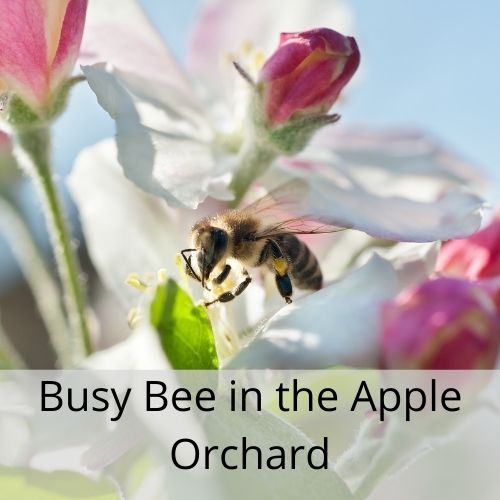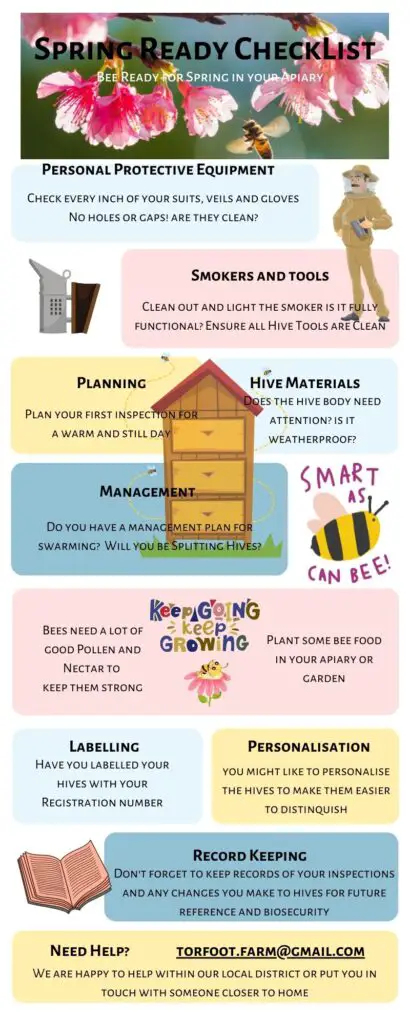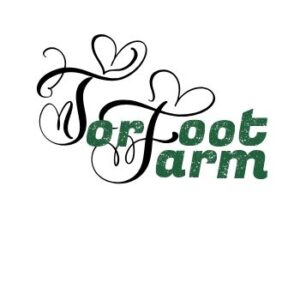
Spring may not officially be upon us but a quick walk around the orchard here on the farm tells a different story. The apples and peaches are alive with the sound of busy bees collecting the first pollens of a warm Spring day. Soon the apricots, plums, pears, cherries and almonds will awaken and burst forth with colour and a beautiful aroma that heralds the new season. Spring is definitely in the air.
While our bees have only ventured out a few times over the last few months they are now more than ready to get to work. In the apiary there are signs that this is the case.
Standing close by we can see the bees are actively collecting pollen and returning to the hive. This is a really good sign that the Queen is laying fresh eggs with the gusto that we remember late last summer. The pollen will be used to make bee bread for the feeding of newly hatched bees and those who have tended to them. The presence of pollen coming into the hive tells us that we are about to have a population explosion. Those bees that have tended to the hive and made it through the winter are now in their final days and will likely die off over the next few weeks to make way for the new foragers of the season. There will be a lot of activity in the hive as the weather warms into those beautiful spring days we all look forward to after a long cold winter. As Bee Carers it is time to get ready for Spring too.
The Spring Checklist.
We have given little thought to our equipment over winter but now is the time to bring all the suits, veils, gloves etc out for a thorough going over. Remember bees are experts at finding the smallest of gaps to climb through. So get the suits out and be meticulous. Give them a good cleaning and check every stitch.
Now that you have checked the protective equipment – it is time to check the other pieces of equipment. Is your smoker clean and functional? Do you need new hive tools? What about the bee boxes themselves – do you have spare frames ready to go? Do you intend to expand your apiary? Below is a full checklist to go through your gear and get ready for the buzz of spring. Don’t forget your swarm management strategies. Below is a helpful checklist graphic. Feel free to right-click and save it for future reference. Send it to a friend if you like.

Now that you have gone through all the little jobs and got your equipment spick and span, it is time to think about your management plan for this season. What will be your aim or goal for the season? Will you be increasing your apiary or are you looking to harvest honey? Each decision has different management strategies and should be planned in advance.
If you plan to expand your apiary size you will likely need some new equipment and hives. Can you source them early enough to have them on hand when they are needed. Don’t forget your hive will be building up numbers and getting ready to do what bees do including swarming.
The hive has a natural inbuilt desire to increase and split. Your older queen will be building up her reserves and getting ready to take a whole lot of bees with her. Your management strategies will need to include fortnightly hive checks for swarm cells. If you want to increase the number of hives in your apiary you will need to be ahead of the game and ready to act immediately. Have your new hive set up ready to go at a moment’s notice. Alternatively, you can try to set up a swarm catch. This is what we have done already. All you need is a nucleus box with some frames inside. We use lemongrass essential oil as a lure to entice any swarms to set up shop.
Our focus for the year will be increasing the strength of a couple of weaker hives that have overwintered okay but need some extra attention. We will also be looking to harvest honey from our flow hive. So each hive will have a slightly different focus in its management. The weaker hives will be supplement fed for the first few weeks to ensure that they have the energy they will need when the spring nectar really starts to peak. When they are well built we will split them to raise new hives.
The honey harvesting flow hive will be under supered to really build up the numbers and then allow the honey to fill the chambers and develop. The focus here will be on not allowing the queen to swarm or the hive to create any swarm cells. This will mean that we will actively remove all queen cells when they develop and increase the space available for the bees to raise brood. As you can see – two very different management strategies.
As always here on the farm there are many jobs to attend to but with some preplanning our best foot goes forward with our bees for a great season. We are continuing to plant bee food at every opportunity to ensure they have access to the very best nutrition all year round.
Should you want any help or assistance or just want to talk with other bee carers please jump into our Facebook group or send us an email. Wishing you an abundant season.
